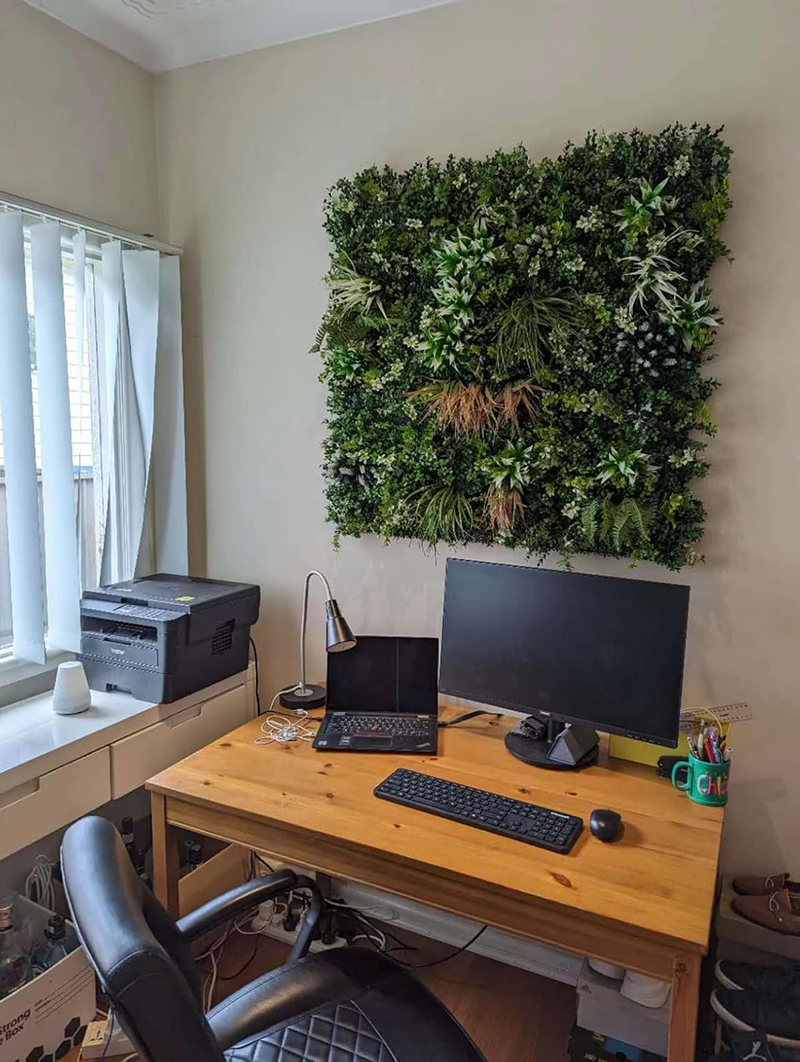The durability and longevity of 3D artificial vertical gardens are critical considerations for urban planners and property owners. These installations must withstand environmental stressors while maintaining aesthetic and functional value. This article explores the factors influencing the lifespan of vertical gardens and outlines methods for predicting their operational lifespan.
Vertical gardens are exposed to various environmental factors that can accelerate degradation. UV radiation, temperature fluctuations, and moisture levels impact the structural integrity of planting modules and substrates. For instance, prolonged exposure to sunlight can cause cracking or fading in plastic-based modules, reducing their lifespan. Similarly, high humidity or frequent rainfall may lead to mold growth or root rot in plants, affecting overall system health.
The substrate composition also plays a role in degradation. Organic substrates, while beneficial for plant growth, may decompose over time, requiring replacement. Inorganic substrates, such as mineral wool or synthetic fibers, tend to last longer but may lack the nutrient-holding capacity of organic alternatives. Regular monitoring of substrate condition is essential to prevent plant stress and system failure.
The choice of plant species significantly influences the lifespan of a vertical garden. Fast-growing plants may outcompete slower species, leading to uneven coverage and increased maintenance needs. Additionally, some plants have shallow root systems that may not anchor well in vertical configurations, increasing the risk of detachment or collapse.
Plant health is also affected by pests and diseases, which can spread rapidly in dense vertical arrangements. Implementing integrated pest management strategies, such as biological controls or resistant plant varieties, can extend the garden’s lifespan. Regular pruning and nutrient supplementation ensure balanced growth and reduce the likelihood of system overload.
The supporting structure of a vertical garden must withstand mechanical loads, including plant weight, wind forces, and water pressure. Materials like PVC panels or metal frames are commonly used due to their durability and corrosion resistance. However, improper installation or lack of reinforcement can lead to structural failure over time.
Maintenance practices are crucial for prolonging lifespan. Routine inspections of irrigation systems, drainage channels, and fasteners prevent leaks, blockages, or detachment. Cleaning the garden surface to remove dust or debris ensures optimal light penetration and airflow. Additionally, replacing damaged modules or plants promptly maintains system functionality and aesthetic appeal.
Efficient irrigation is vital for the longevity of vertical gardens. Overwatering can lead to waterlogging, root decay, and substrate erosion, while underwatering causes plant stress and dieback. Automated drip irrigation systems with moisture sensors help maintain optimal soil moisture levels, reducing the risk of degradation.
Water quality also affects system lifespan. Hard water or high salinity can cause mineral buildup in irrigation lines or substrate, reducing permeability. Installing water filtration systems or using rainwater harvesting can mitigate these issues. Regular flushing of irrigation lines prevents clogging and ensures uniform water distribution.
Vertical gardens in regions with extreme climates face additional challenges. In hot, arid areas, evapotranspiration rates are high, requiring frequent irrigation and shade measures to prevent plant desiccation. In cold climates, freezing temperatures may damage irrigation components or cause substrate contraction, leading to cracks.
Designing gardens with climate-resilient features, such as windbreaks, thermal insulation, or drought-tolerant plants, enhances their lifespan. For example, incorporating green roofs or shading devices can reduce thermal stress on vertical gardens in urban heat islands.
Predicting the lifespan of 3D artificial vertical gardens requires a holistic approach that considers environmental, biological, and structural factors. By selecting durable materials, resilient plant species, and implementing proactive maintenance practices, stakeholders can ensure these installations remain functional and visually appealing for decades. As technology advances, the integration of smart sensors and adaptive design strategies will further enhance the longevity of vertical gardens in diverse urban settings.

Contact: Amy
Phone: 86-15311787313
E-mail: info@foszmac.com
Whatsapp:86-15311787313
Add: Fengtai District, Dacheng Road, No.24 Building, Room 203, Beijing, China